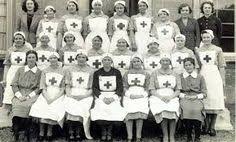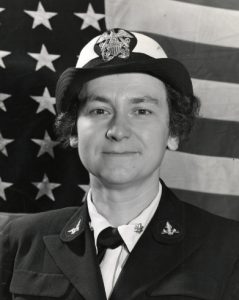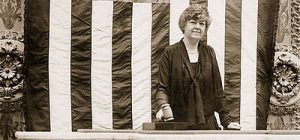
World War II Field Nurse Uniform.
This website provides an overview of Nursing in WWII. You’ll find information about Nursing in the Military, Blood Donation and Blood Banking, and Human Rights. Subtopic 1 discusses the creation of WAVES, WAC/WAAC, nursing in the military, and the expansion of the Army Nurse Corps. Even though not discussed, subtopic 2 discusses WWII military health on the pacific, WWII military health in Europe and on the homefront. Subtopic 3 discusses the Red Cross National Blood Donor Service, Dr. Charles Drew, and Blood Transfusions. Finally, Subtopic 4 will provide an overview of radiation effects of the atomic bomb in Japan, the declaration of Geneva and Eleanor Roosevelt.
Timeline:
1901-Army Nurse Corps Established
1941-Pearl Harbor Attack on U.S. by Japanese (December 7th)
1941- Blood for Britain Project
1942- WAVES (Women Accepted for Volunteer Emergency Services) was established.
1943-Passing of the Bolton Act by Congress
1943-WAC (Women’s Army Corps) and WAAC (Women’s Army Auxiliary Corps) created and established.
1945-Atomic bombing in Hiroshima, Japan
1946-Eleanor Roosevelt was was appointed as a delegate to the United Nations by President Harry Truman
Biography of our Key Players:
Mildred H. McAfee

McAfee in her uniform for the Naval Reserve, Vassar College Archives and Special Collections.
Mildred Helen McAfee was the guide for the program called WAVES, or Women Accepted for Volunteer Emergency Service. This program helped supply over 80,000 nurses a way of life and helped the soldiers who were fighting in the war. It granted nurses the right to be enlisted into the United States Navy Reserve, and let nurses into the warfront to help the wounded. Before this, McAfee was the president of Wellesley College where she took a leave of absence to serve in WAVES. She was the first female officer to be commissioned as a Lieutenant Commander in the Navy Reserve, and serve in the Navy for almost five years. After she served, she returned to her job as president of Wellesley College and married Reverend Dr. Douglas.
Edith N. Rogers

Edith Nourse Rogers of Massachusetts presides over the House Chamber in this image from 1926, Collection of the U.S. House of Representatives.
Edith Nourse Rogers was an active part in both World War I and World War II. She was a volunteer for the Red Cross during WWI and became the reason the Women’s Army Corps and Women’s Army Auxiliary Corps was put into place as well. After her husband, John J. Rogers, died she filled his unexpired term in Congress and became the first New England congresswoman to serve in the U.S. Congress. Once she finished this, she introduced the legislation that would eventually create Women’s Auxiliary corps and women army corps to congress.

Eleanor Roosevelt at the white house next to her husband portraits Franklin Roosevelt Eleanor Roosevelt fought greatly for human rights . she volunteered as a co-chaired the office of office civilian defense (OCD). that organization made sure everyone was treated as equal . she help build organization to empower women who were looked as a minorities in the society . she didn’t see color .
Dr. Charles Drew
 Charles Richard Drew was an African American physician, researcher, and surgeon who developed a technique store blood and he also developed blood banks during world war 2. He also collected 14,500 pints of blood for the “Blood for Britain” program. In the end he decided to teach African American Surgeons and place them in positions where they could nurture the tradition of excellence.
Charles Richard Drew was an African American physician, researcher, and surgeon who developed a technique store blood and he also developed blood banks during world war 2. He also collected 14,500 pints of blood for the “Blood for Britain” program. In the end he decided to teach African American Surgeons and place them in positions where they could nurture the tradition of excellence.